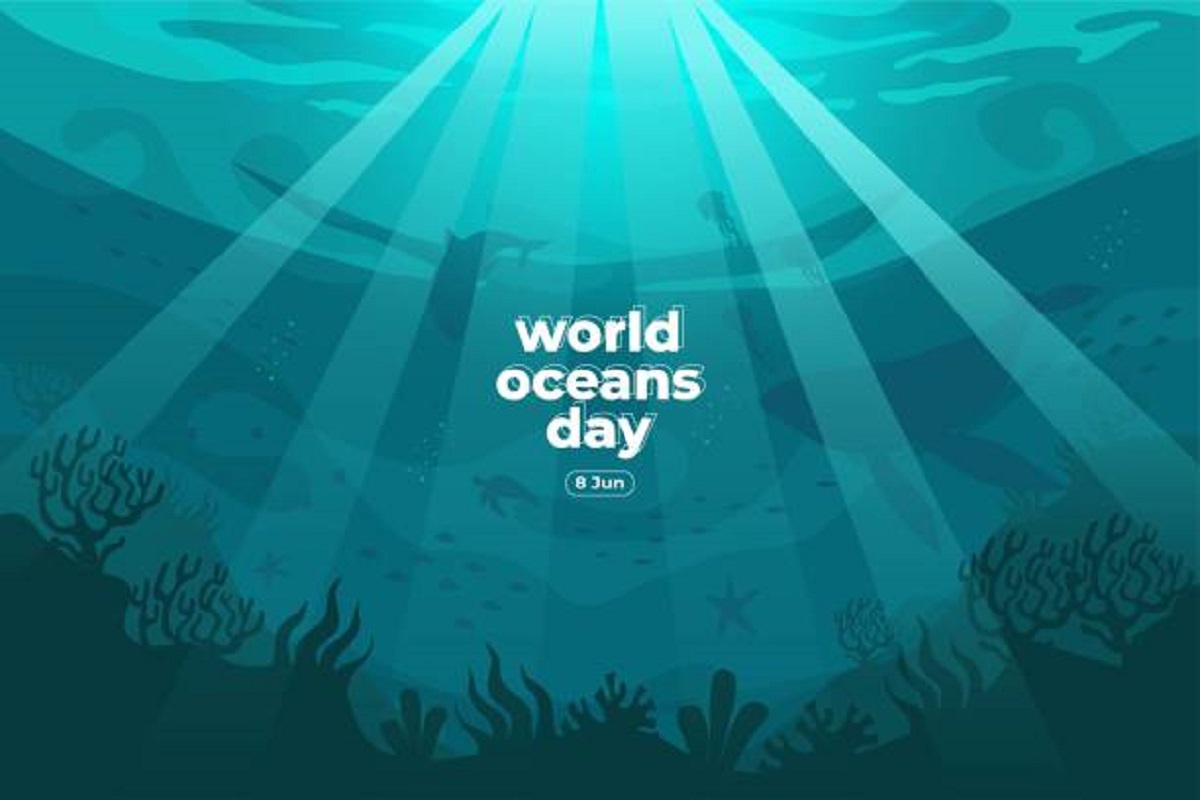World Ocean Day: Visuals of Tuvalu’s Foreign Minister Simon Kofe addressing the United Nations climate conference in Glasgow in 2021 were enough to trigger the alarm bells for the emergency of rising Ocean levels and urgent need for action to preserv the health of our Oceans for the survival of human lives. Standing knee-deep in seawater to show how his low-lying Pacific Island nation is on the front line of climate change, Tuvalu’s Foreign Minister aimed at drawing attention of the world about Tuvalu’s struggle against rising sea levels.
There are many countries and island nations which are facing the brunt of rising oceans levels due to Global Warming and a large number of populations residing near the shores are already facing critical survival issues.
World Ocean Day reminds us how the rising oceans level is leaving a lasting impact on the lives and what we need to do.
Experts believe that by 2050, larger part of Bangladesh which crosses through north of Indian Ocean and the entire Maldives, an island nation surrounded by the Indian Ocean-both the nations close to India, would submerge into the Ocean.
The experts also say that Bangladesh may lose around 40–70 per cent of the land area to flooding and rising sea levels in the next 70 years. The first immediate loss of 25 per cent of the land may well happen within the next 30 years.
Bangladesh
Bangladesh ranks sixth on the 2018 Global Climate Risk index and for many Bangladeshis, particularly the rural communities in low-lying coastal areas, the risks are already unmanageable. Riverbank erosion displaces 50,000 to 200,000 people in Bangladesh each year.
The National Research Development Corporation (NRDC) estimates that 50,000–200,000 Bangladeshis are displaced each year due to riverbank erosion alone, and a 2007 World Bank report estimates 300,000–400,000 citizens resettled as climate refugees in the capital city, Dhaka.
They often end up living in the most vulnerable and poorest areas of the city, living as pavement dwellers and bathing in the contaminated water of the Buriganga River. The NRDC also quotes a climate expert prediction that, by 2050, the rising sea level will submerge an additional 17 per cent of the country and uproot another 20 million people. This is in addition to the nearly 75 per cent of the country already underwater, which in 2004 had already impacted 25.9 million people out of its then population of 141.3 million.
Sunderbans
As we talk about Sunderbans, an analysis of cyclonic events in the Bay of Bengal over a period of 120 years indicates a 26 per cent rise in the frequency of high to very high intensity cyclones over this time period.
One should also take into account recent evidence of accelerating global sea-level rise.
Based on this, scientists have projected that relative sea-level rise is likely to inundate most of the Sundarbans by mid-century and those that remain could be threatened by saltwater incursion.
This will put Kolkata at one of the biggest humanitarian challenges. Apart from that, Kolkata will also face higher tides and more intense storms, with storm surges unchecked by the disappearing mangroves.
Significance of Oceans
Ocean currents act much like a conveyer belt, transporting warm water and precipitation from the equator toward the poles and cold water from the poles back to the tropics. Thus, currents regulate global climate, helping to counteract the uneven distribution of solar radiation reaching Earth’s surface.
The ocean plays a fundamental role in shaping climatic zones and world’s ocean is crucial to heating the planet. While land areas and the atmosphere absorb some sunlight, the majority of the sun’s radiation is absorbed by the ocean. Particularly in the tropical waters around the equator, the ocean acts as a massive, heat-retaining solar panel. Earth’s atmosphere also plays a part in this process, helping to retain heat that would otherwise quickly radiate into space after sunset.
World Meteorological Observation (WMO) on Ocean
According to World Meteorological Observation (WMO), in 2019, sea level has continued to rise. In October 2019, the global mean-sea level reached its highest value since the beginning of the high precision altimetry record (January 1993).
The average rate of rise is estimated to be 3.24 ± 0.3 mm/yr over the 27-year long period, but the rate has increased over that time. Increased ice mass loss from the ice sheets is the main cause of the global mean sea-level acceleration.
The rising levels of ocean and climate change has left a severe impact on farming and it has turned out to be a biggest challenge.
Impact of Rising Oceans on Crops
While India failed to witness spring this season, severely impacting production of wheat, lemon, mango, mint and now litchi due to sudden heatwave.
Summer crops such as pulses, coarse cereals, oilseeds, vegetables and fruits have also been hit by the heatwaves across most parts of north India and western parts of the country.
“Crops in more than 60 per cent of wheat-grown areas, especially in Punjab, Haryana, Rajasthan and parts of Uttar Pradesh and Madhya Pradesh have been hit by heatwaves,” a scientist with a leading research institute, said.












